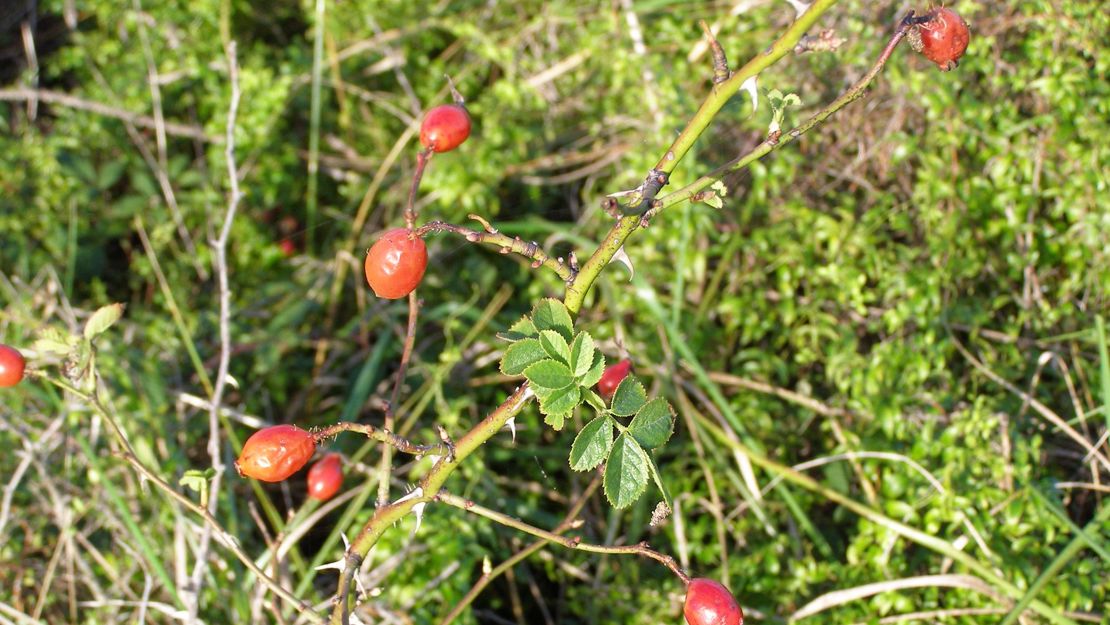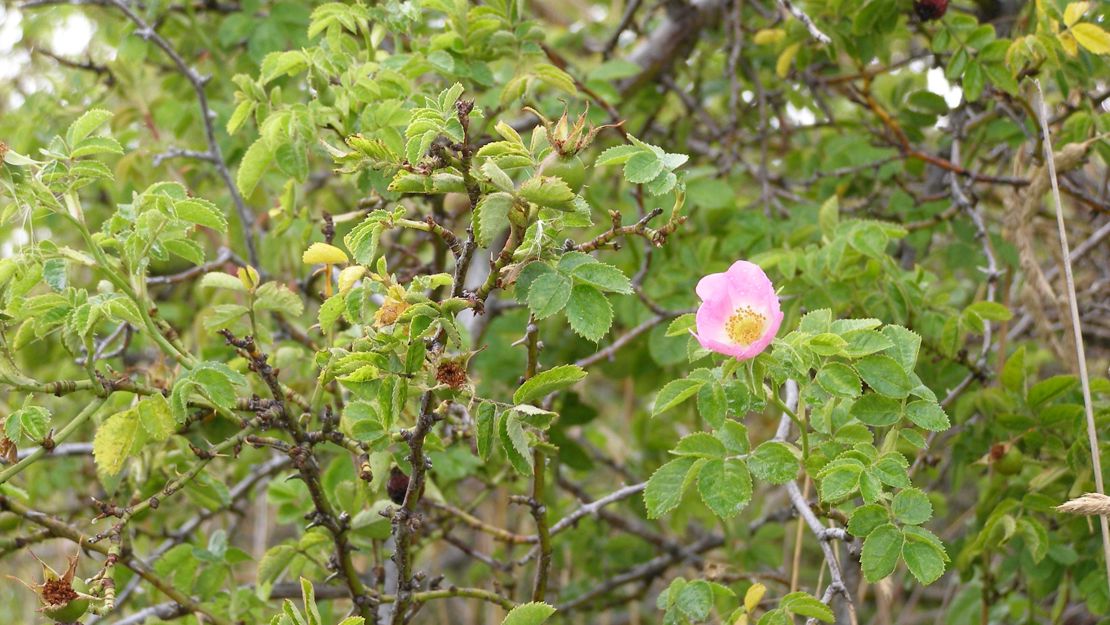Rosa rubiginosa
Sweet briar
Family: Rosaceae
Origin: Europe, North Africa

Regional Pest Management Plan (RPMP) status
- Whole region — Sustained control
- Hauraki Gulf Controlled Area Notice pest
General description
Dense, perennial, deciduous shrub < 3 m tall. Stems are thorny. Leaves are compound, pinnate, glandular, hairy, serrated and release an apple-like fragrance when crushed. Flowers are pink and borne in clusters in spring – summer. Fruits are egg-shaped orange/red hips.
What you need to know
To help protect our environment:
- You must not breed, distribute, release or sell sweet briar within the Auckland region.
- You must not plant sweet briar within the Auckland region, unless you are transferring an existing plant on your land to another location within the boundaries of the same property.
- You must destroy any sweet briar on land that you occupy if it has been planted in breach of the above rules and you are directed to do so by an authorised person.
Habitats
Grassland, pasture, open shrubland, disturbed forest, riparian edges, roadsides, steep slopes, scree fields.
Dispersal
Seeds dispersed by birds and mammals. Vegetative spread from suckers.
Impact on environment
Aggressive coloniser of disturbed native vegetation that excludes native plant species. Reduces cover of desirable pasture species and pasture productivity. Can impede stock and farm vehicle movement.
Control
Site Management
Follow up treated areas 3 times per year. Encourage natural regeneration of native plants or replant treated areas where possible after 2-3 treatments to establish dense ground cover and minimise reinvasion.
Recommended approaches
Physical control
Method: Dig out with care to avoid thorns.
Plant parts requiring disposal: Seeds.
Disposal options: Remove to greenwaste or landfill.
Biocontrol
Biocontrol is currently not available for this species.
Community agrichemical control recommendations
No qualifications: Cut stump and paste freshly cut base of stems with metsulfuron gel.
Basic Growsafe certified: Cut stump and spray freshly cut base with 1g metsulfuron-methyl per 1 L of water.
Certified Handler/Experienced agrichemical user: Foliar spray with 5g metsulfuron-methyl per 10L of water and 20ml penetrant.
Safety notes
Plant has thorns.
Caution: When using any herbicide or pesticide please read the label thoroughly to ensure that all instructions and safety requirements are followed.




